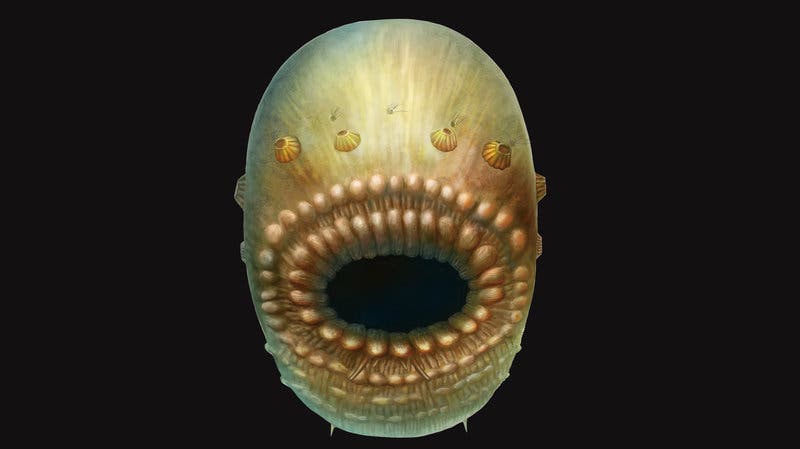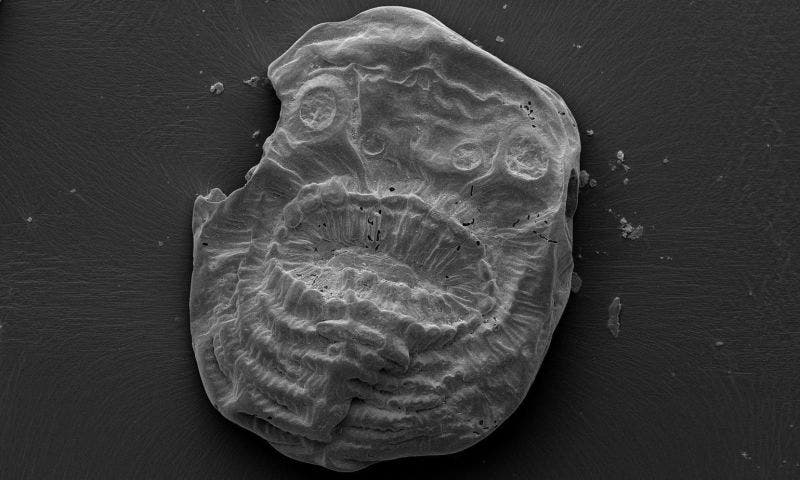Scientists have discovered a strange creature which would look freakishly ugly if it wasn’t about as big as a grain of rice. It’s also probably related to you.

Artistic depiction of Saccorhytus coronarius, a sea creature that lived 540 million years ago. Image credits: Jian Han, Northwest University, China
The creature lived 540 million years ago, “slithering or clambering” in sediment in shallow seas. It was discovered by Conway Morris, a paleobiologist at the University of Cambridge in the U.K., who doesn’t really have many compliments for it — even the name he decided upon is unflattering.
“We arrived at the word Saccorhytus, which basically means a wrinkled bag,” Morris says. “Doesn’t sound too appetizing, does it?”
The creature itself is just one big mouth, with a few spikes and extra holes/mouths which were probably used for oozing waste. It didn’t have an anus, so it probably eliminated its unwanted stuff through these holes.
“It has a very small body. It doesn’t have a tail. It does not appear to have eyes,” says Conway Morris.
It sounds incredibly primitive, but 540 million years ago, this creature was on the cutting edge of evolution. Keep in mind, this was a time when algae were pretty much the most interesting things around. With its big mouth and extra small mouths, this little critter went big, and its legacy might still live on today.
It could be the forerunner of a significant part of the tree of life.
“What we have here is an animal which we would suggest is in fact the earliest known deuterostome,” Morris says.
Deuterostomes are animals that grow two openings early in their embryonic development — “deuterostome” is Greek for “second mouth.” This indicates that the anus develops first and the mouth after that. Deuterostomes are a huge group of organisms which include all vertebrates. Remember those small, disgusting holes used for oozing waste? They’re the most important part of this discovery.
“And why’s that important? Because basically one of the very few hallmarks of all deuterostomes is what we call gill slits,” says Conway Morris.
Just so we’re clear on this, we’re not saying all vertebrates and humans originate from this little fellow. But this is the ancestor of a major group of animals, one that includes humans as well — and we may have very well evolved from something just like this.
Peter Van Roy, a paleobiologist with Yale University and Ghent University in Belgium who wasn’t involved in the paper says that finding these fossils and understanding how these creatures live could help us better understand the evolutionary processes which led to the development of deuterostomes. He also says that this creature marks a transition to a different type of world, a much more dynamic one.
“We come from these tiny, small blobs. That, I think, is an important thing for people to realize,” says Van Roy.
“Things start becoming big and start developing hard parts and structures to capture other animals and tear them apart — basically, a much more violent world,” says Van Roy. Food chains were just starting to assemble. “It was the beginning for the world as we know it now, a world that’s dominated by active animals — things walking around, swimming around, not just sitting there,” he says.










